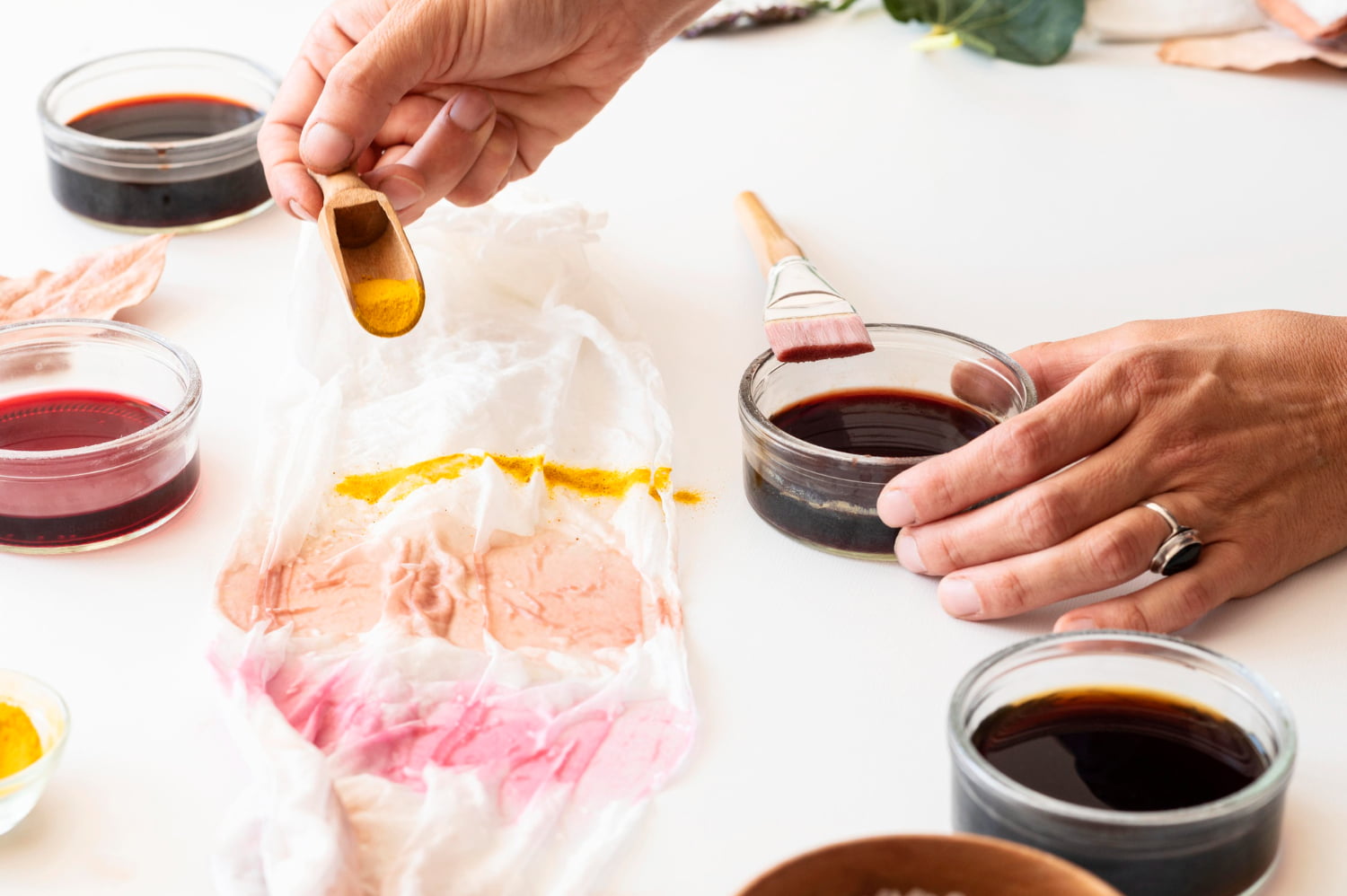Introduction
How to make black with food coloring? Black, with its deep and mysterious allure, is a color that can add a touch of sophistication to your culinary creations. Crafting your black food coloring at home allows for customization, ensuring your dishes not only taste exquisite but also look visually striking. In this extensive guide, we will explore various methods and techniques to create black food coloring using both traditional and natural ingredients.
Understanding the Color Wheel
Before diving into the art of making black, it’s crucial to understand the color wheel. The color wheel is a visual tool that organizes colors based on their relationships, providing a foundation for creating harmonious and visually appealing combinations. Understanding the basics of color theory will guide your efforts in crafting the perfect shade of black.
Basics of Making Black
How to make black with food coloring: Black is a unique color that can be created through the careful blending of colors. While it may seem counterintuitive, understanding the combination of primary and secondary colors is essential for achieving the desired shade of black.
Experimenting with Primary Colors
The most straightforward method of making black is by blending the primary colors—red, blue, and yellow. Understanding the intensity of each color and the ratio at which they are mixed will determine the final shade of black.
- Mixing Red, Blue, and Yellow: Start by combining red, blue, and yellow in varying proportions. Experiment to find the balance that achieves your desired shade of black. This method allows for a wide range of blacks, from intense to softer and more muted tones.
Secondary Colors for Black
In addition to mixing primary colors, secondary colors can be combined to create black. Explore the following combinations:
- Blending Complementary Colors: Combining complementary colors on the color wheel, such as red and green or blue and orange, can result in a neutral and dark black.
- Combining All Primary Colors: Mixing all primary colors—red, blue, and yellow—in equal parts can create a deep and true black.
Achieving Depth with Complementary Colors
For a more nuanced and vibrant black, consider using complementary colors. Complementary pairs on the color wheel, such as purple-yellow or orange-blue, can create depth and complexity in your black mixture.
Tips for Precision in Crafting Black
To ensure your black turns out as desired, follow these tips:
- Measure your food coloring accurately.
- Mix colors in small increments for better control.
- Keep a record of successful ratios for future reference.
Common Mistakes to Avoid in Black Creation
Avoid these pitfalls when creating black food coloring:
- Overmixing: Vigorous stirring can lead to a muddy black. Mix gently to maintain clarity.
- Using Too Much Coloring: Black can be intense, so start with small amounts and adjust as needed.
- Not Testing Colors First: Perform a small test before committing to a larger batch. Colors may appear differently once mixed.
Natural Alternatives to Black Food Coloring
How to make black with food coloring: For those seeking a natural approach, consider these alternatives:
- Activated Charcoal: A natural substance, activated charcoal, can be used to create a dark and intense black color.
- Squid Ink: Commonly used in Mediterranean cuisine, squid ink provides a rich and deep black color to dishes.
Creative Applications of Homemade Black
Explore various creative applications for your homemade black food coloring:
- Icing and Frosting: Elevate your cakes and pastries with custom black icing for a dramatic and elegant touch.
- Drinks and Cocktails: Infuse your beverages with natural black tones for a bold and visually striking drink.
- Dark and Elegant Desserts: From black velvet cakes to dark chocolate truffles, experiment with a variety of desserts infused with your homemade black coloring.
- Savory Dishes with a Touch of Black: Add a touch of black to savory dishes, from pasta and sauces to unique appetizers.
The Art of Presentation with Black
Presentation is key when using black in your culinary creations. Consider the overall aesthetics, including plating and garnishes, to enhance the visual appeal of your black-infused dishes.
Black in Different Culinary Styles
Discover how black can be incorporated into various culinary styles:
- Gothic and Halloween Themes: Embrace the mysterious and dark side of black in dishes inspired by Gothic and Halloween themes.
- Modern Culinary Techniques: Incorporate black into modern culinary techniques, such as molecular gastronomy, for avant-garde and visually stunning creations.
Enhancing Black in Sweet Treats
Explore the sweet side of black in desserts:
- Black Velvet Cake: Impress your guests with a black velvet cake, a visually striking and delicious twist on the classic red velvet.
- Midnight Macarons: Infuse macarons with the elegance of black for a sophisticated and eye-catching treat.
- Charcoal-Infused Ice Cream: Create a unique and trendy charcoal-infused ice cream that not only tastes delightful but also looks intriguing.
Black in Savory Dishes: A Culinary Adventure
Black can be a surprising addition to savory dishes:
- Squid Ink Pasta: Dive into the world of Mediterranean cuisine with squid ink pasta, a dish known for its intense black color and unique flavor.
- Black Bean Burgers: Create flavorful and visually appealing black bean burgers for a vegetarian twist.
- Blackened Salmon: Infuse your salmon with a blackened spice rub for a visually stunning and delicious seafood dish.
Black in Beverages: Bold and Dark Drinks
How to make black with food coloring: Add a pop of color to your drinks with black food coloring:
- Black Lemonade: Surprise your guests with a visually striking black lemonade, perfect for themed parties.
- Activated Charcoal Cocktails: Experiment with cocktails infused with activated charcoal for a bold and mysterious look.
- Black Tea Blends: Enhance your tea-drinking experience with custom black tea blends that not only taste exquisite but also look captivating.
The Aesthetics of Black in Culinary Arts
Beyond taste, black contributes to the overall aesthetics of culinary arts:
- Sophistication and Elegance: Use black to add an element of sophistication and elegance to your dishes.
- Visual Contrast: Leverage black to create visual contrast, making other colors on the plate stand out.
- Instagram-Worthy Creations: Share your black-infused masterpieces on social media, showcasing the bold and captivating allure of your culinary creations.
Conclusion – How to Make Black with Food Coloring
In the world of culinary arts, mastering the creation of black food coloring provides a canvas for bold and sophisticated creations. Armed with knowledge about color combinations, precision, and potential pitfalls, you’re ready to embark on your culinary adventure. Whether you’re baking dramatic desserts, infusing color into savory dishes, or experimenting with dark beverages, the art of making black is a skill that adds a touch of mystery and elegance to your kitchen. So, unleash your creativity and embrace the depth and richness of homemade black food coloring in your culinary endeavors.
Frequently Asked Questions:
Q: Can I use activated charcoal in all recipes that require black food coloring?
A: Activated charcoal works well in many recipes but may have a distinct flavor. Test it in small quantities first.
Q: How can I intensify the black color without using too much coloring?
A: Experiment with complementary colors like white or gray in small amounts to enhance the intensity of black.
Q: Can I mix different types of natural black coloring for a unique shade?
A: Absolutely! Combining natural alternatives like activated charcoal and squid ink can yield intriguing shades of black.
Q: Are there any savory dishes where black food coloring works particularly well?
A: Black food coloring can enhance the visual appeal of dishes like squid ink pasta, black bean burgers, and blackened salmon.
Q: What’s the best way to preserve the intensity of black in desserts over time?
A: Store desserts with black food coloring in a cool, dark place to maintain the intensity of the color.
Examine Diverse Works: How to Make Orange Food Coloring



